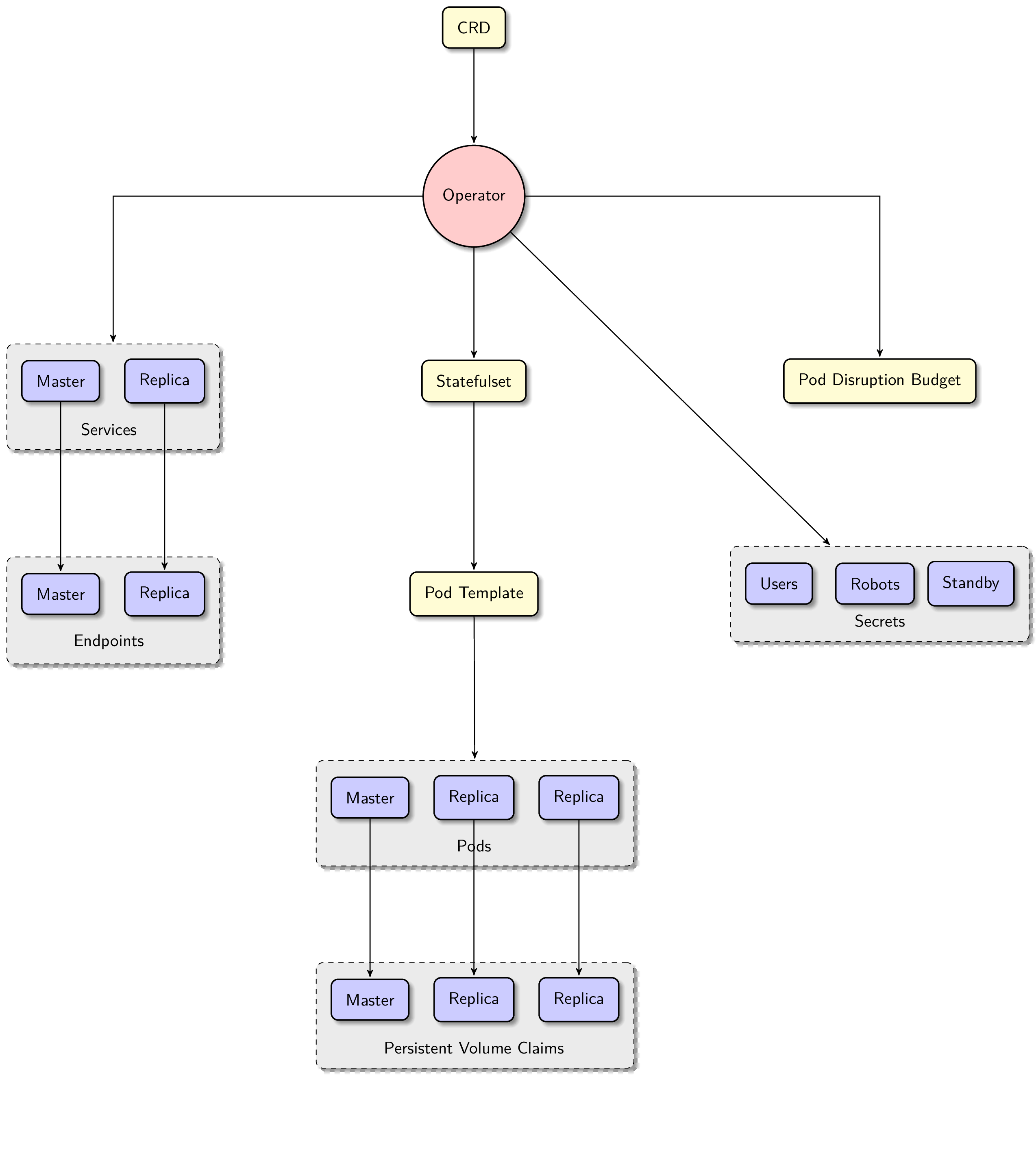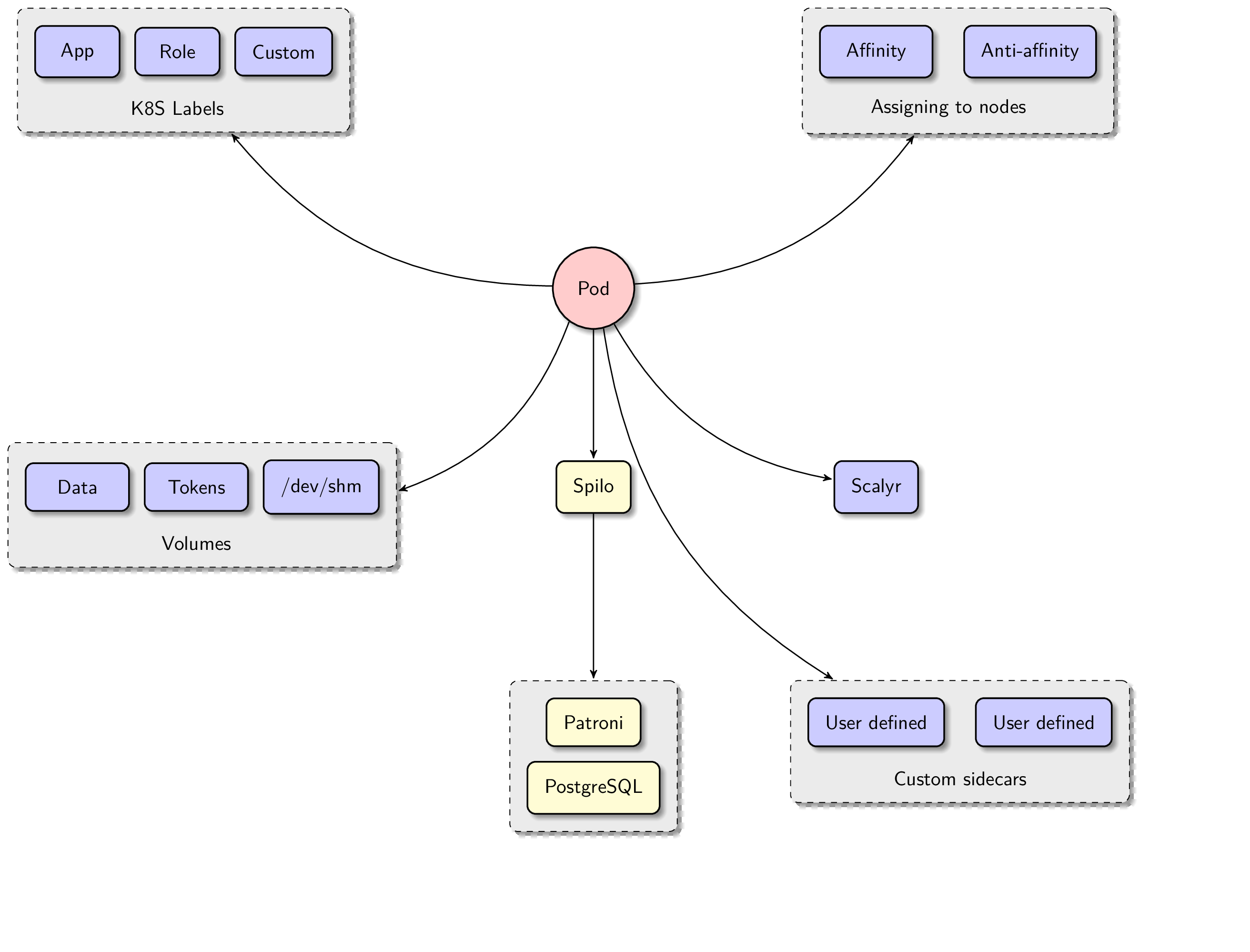The Postgres Operator made it to the Google Summer of Code 2019! As a brand new mentoring organization, we are now looking for our first mentees. Check our ideas and start discussion in the issue tracker. And don't forget to spread a word about our GSoC participation to attract even more students.
The Postgres operator manages PostgreSQL clusters on Kubernetes:
-
The operator watches additions, updates, and deletions of PostgreSQL cluster manifests and changes the running clusters accordingly. For example, when a user submits a new manifest, the operator fetches that manifest and spawns a new Postgres cluster along with all necessary entities such as Kubernetes StatefulSets and Postgres roles. See this Postgres cluster manifest for settings that a manifest may contain.
-
The operator also watches updates to its own configuration and alters running Postgres clusters if necessary. For instance, if a pod docker image is changed, the operator carries out the rolling update. That is, the operator re-spawns one-by-one pods of each StatefulSet it manages with the new Docker image.
-
Finally, the operator periodically synchronizes the actual state of each Postgres cluster with the desired state defined in the cluster's manifest.
Here is a diagram, that summarizes what would be created by the operator, when a new Postgres cluster CRD was submitted:
This picture is not complete without an overview of what is inside a pod, so let's zoom in:
These two diagrams should help you to understand the basics of what kind of functionality the operator provides. Below we discuss all everything in more details.
There is a browser-friendly version of this documentation at postgres-operator.readthedocs.io
- concepts
- user documentation
- administrator documentation
- developer documentation
- operator configuration reference
- cluster manifest reference
- command-line options and environment variables
the rest of the document is a tutorial to get you up and running with the operator on Minikube.
There are two places to get in touch with the community:
- The GitHub issue tracker
- The #postgres-operator slack channel under Postgres Slack
Prerequisites:
Note that you can also use built-in Kubernetes support in the Docker Desktop
for Mac to follow the steps of this tutorial. You would have to replace
minikube start and minikube delete with your launch actionsfor the Docker
built-in Kubernetes support.
git clone https://github.com/zalando/postgres-operator.git
cd postgres-operator
minikube start
# start the operator; may take a few seconds
kubectl create -f manifests/configmap.yaml # configuration
kubectl create -f manifests/operator-service-account-rbac.yaml # identity and permissions
kubectl create -f manifests/postgres-operator.yaml # deployment
# create a Postgres cluster in a non-default namespace
kubectl create namespace test
kubectl config set-context minikube --namespace=test
kubectl create -f manifests/minimal-postgres-manifest.yaml
# connect to the Postgres master via psql
# operator creates the relevant k8s secret
export HOST_PORT=$(minikube service --namespace test acid-minimal-cluster --url | sed 's,.*/,,')
export PGHOST=$(echo $HOST_PORT | cut -d: -f 1)
export PGPORT=$(echo $HOST_PORT | cut -d: -f 2)
export PGPASSWORD=$(kubectl get secret postgres.acid-minimal-cluster.credentials -o 'jsonpath={.data.password}' | base64 -d)
psql -U postgres
# tear down cleanly
minikube deleteWe have automated starting the operator and submitting the acid-minimal-cluster for you:
cd postgres-operator
./run_operator_locally.shNote we provide the /manifests directory as an example only; you should consider adjusting the manifests to your particular setting.
The best way to test the operator is to run it locally in minikube. See developer docs(docs/developer.yaml) for details.
The operator can be configured with the provided ConfigMap(manifests/configmap.yaml) or the operator's own CRD.


